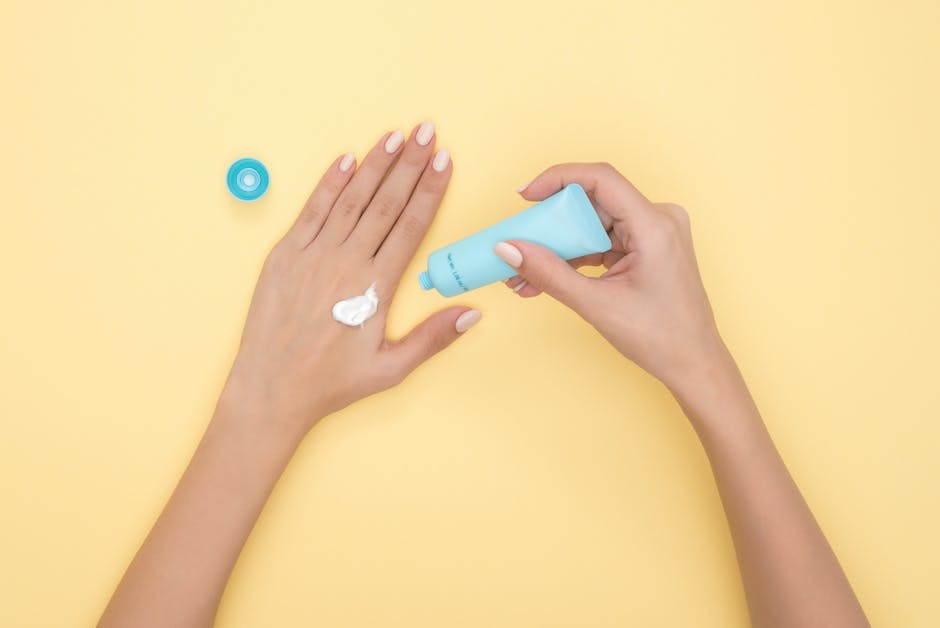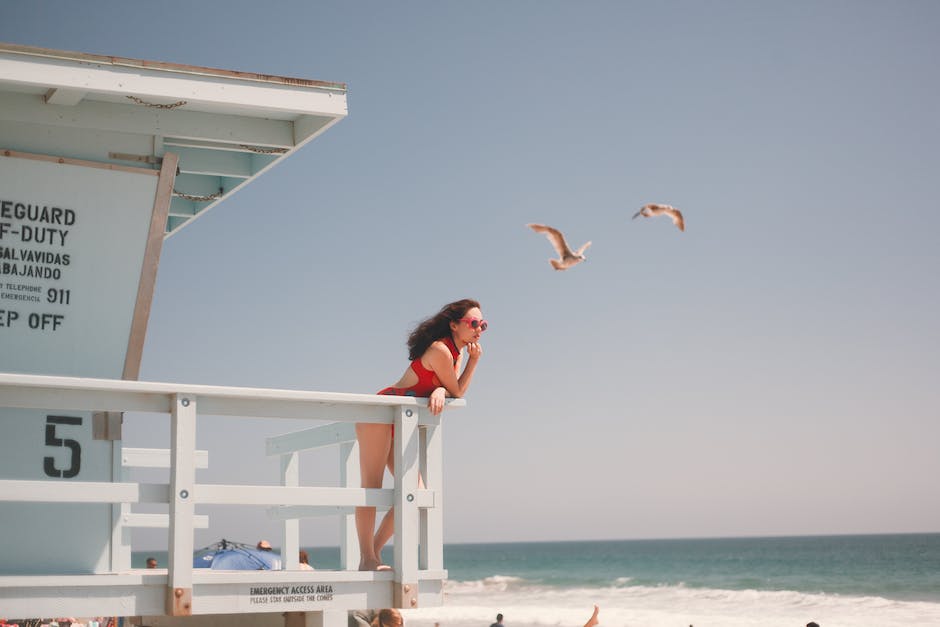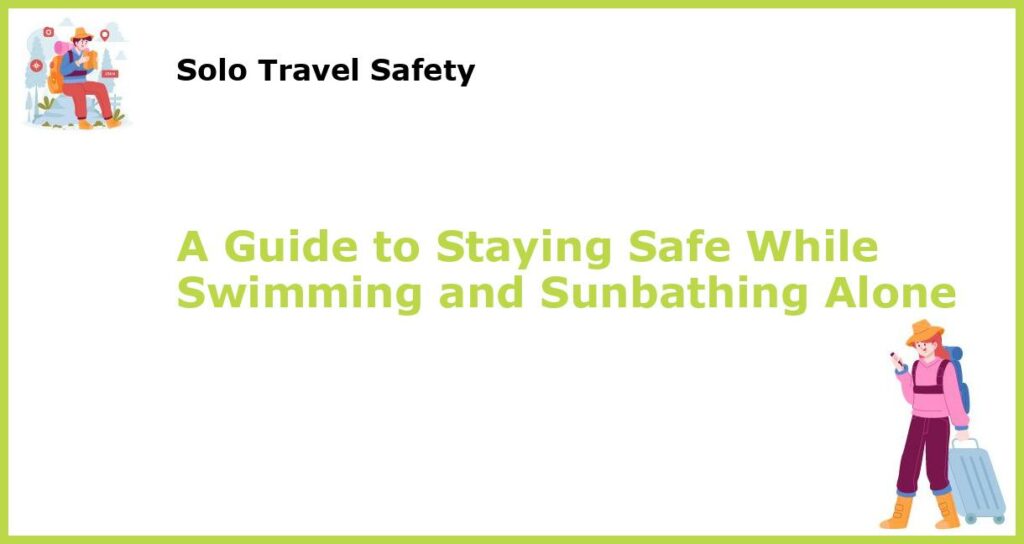Have you ever wanted to spend a day swimming or sunbathing alone? Taking some time for yourself can be a peaceful and relaxing experience, but it also comes with some risks. Here are some useful tips to help you stay safe while enjoying some time alone.
Benefits of Swimming and Sunbathing Alone

Swimming and sunbathing alone can be a great way to relax, unwind, and enjoy some time to yourself. It can be a peaceful experience that provides a sense of freedom and solitude. Solitary swimming can give you the feeling of escaping the noise and commotion of the busy world. Sunbathing on the other hand is therapeutic, and it can give you time to reflect on things without being disturbed by other people. Moreover, the absence of distractions can help you focus and meditate.
Risks of Swimming and Sunbathing Alone

Swimming and sunbathing alone can be risky, especially if you are not familiar with the area. There is always a possibility of drowning, even for experienced swimmers, and being exposed to harmful UV rays without any assistance or supervision can also put you at risk. Sunbathing alone can also expose you to various dangers such as heat exhaustion, sunburn, and dehydration. In worse cases, it can even lead to skin cancer.
Checking the Weather and Tides

Before heading to a beach or a swimming pool, check the weather conditions and the tide schedule. Make sure that there are no strong currents, rip tides or dangerous waves that can harm you. The National Oceanic and Atmospheric Administration provides regular updates on weather and tide for the US. Moreover, you can also download weather applications on your phone to keep yourself updated. Also, avoid swimming alone during thunderstorms or lightning, as it can be hazardous. Take note that you should not rely on the status of the water reports alone. It is always better to trust your gut feeling and leave if you think it’s not safe.
Telling Someone About Your Plans

Notify someone about your swimming and sunbathing plan, even if it’s just a friend or family member. Choose someone you trust and share your location and expected return time with them so that they can take necessary actions in case of any emergencies. This way, someone would know where to look and could alert the authorities if you did not return on time. If possible, give them the address of the area you’re swimming in and tell them the place you’ll be parking your car. Furthermore, make sure to keep your phone with you, or if that’s not practical, keep it in a safe and dry spot accessible to you.
Bringing Necessary Equipment

Make sure to bring necessary equipment such as sunscreen, a hat, sunglasses, and appropriate swimwear. It can also be helpful to bring a flotation device or a life-saving buoy when swimming alone. These items can help protect you from harmful UV rays and can provide support if something goes wrong. Sunscreen helps prevent dark spots, sunburns, and skin aging. If you’re going to swim in a deep pool with a diving board, avoid wearing jewelry or other accessories that can weight you down, attracting danger to yourself.
Staying Near a Lifeguard Station/Location

Choose a beach or swimming pool that has a lifeguard station or a designated swimming area. This way, you can have extra safety measures in place, and it can be easier for someone to spot you in case of any trouble. Lifeguard stations are equipped with lifesaving equipment, and the authorities consistently patrol the area. Moreover, when you swim, try to be visible from a distance. Use a brightly colored swimming outfit, and avoid wearing dark-colored outfits that can blend in with the water color or shadow. Try to find a spot with good lighting and less shadow.
Being Aware of the Surroundings

Be aware of your surroundings at all times. Before deciding to enter the water, watch out for signs that say the area is dangerous for swimming. Know the location and direction of the waves, currents, and any potential hazards. Keep an eye out for suspicious people or animals near you and maintain proper distance. Moreover, try not to swim near boats, surfers, or other obstacles so that you won’t get hit or run over by one. It’s better to be safe than sorry, and it’s also essential to familiarize yourself with the swimming area and its rules before starting swimming.
Staying Hydrated

It’s important to stay hydrated when swimming or sunbathing. Bring a water bottle and some snacks with you so that you can stay hydrated and energized throughout your time alone. Your body can quickly dehydrate in the sun, leading to headaches and dizziness. Therefore, staying hydrated is crucial, especially during hot weather conditions. The American Heart Association recommends drinking a maximum of 64 oz. of fluids per day, depending on your weight and height.
Knowing Your Limits

It’s essential to know your limits when swimming and sunbathing alone. Don’t push yourself too hard and take breaks whenever you feel tired or overwhelmed. It’s better to take a rest, relax, and then continue your swim. If you are unsure of your swimming ability or feel you have a health condition that limits your actions, it’s better to find someone who can swim with you. Moreover, if you start to feel unwell or lightheaded, leave the area immediately. It’s essential not to overdo a good thing and to keep yourself safe while swimming alone.
Leaving the Water If Uncomfortable

If you start to feel uncomfortable or dizzy while swimming, leave the water immediately. Swim towards the shore or the edge of the pool and seek medical attention if necessary. You could be having a cramp or a medical condition that requires immediate attention. To avoid any unpleasant incidents, it’s better to leave the water as soon as you feel uncomfortable.








 You might also be interested in those articles related to solo traveling
You might also be interested in those articles related to solo traveling